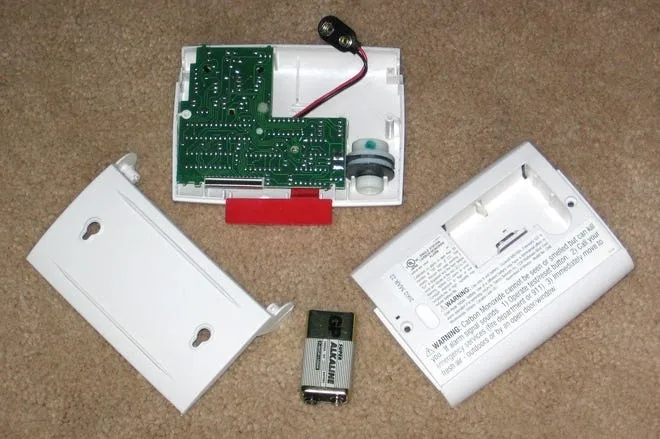The leaves are still on the trees, the weather outside alternates between stifling and sweltering and The Bears football season has barely begun, but for homeowners, it’s time to begin prepping for the fall and winter months.
From professional inspections to ordinary maintenance, a few simple steps taken now can help stave off problems — not to mention frantic calls for service when the furnace stops working — when temperatures start to drop.
1. Service your furnace

Who wants to crank up their furnace on the first super-cold day (or night) of the year only to find that it’s missing the requisite hot air? To avoid pulling out the blankets and mittens. The frequency depends on each system as well as lifestyle choices, including the presence of pets or cigarette-smokers in the home. The average modern, high-efficiency furnace, she said, lasts between 12 and 15 years; furnaces older than that might be better off being replaced than repaired.
2. De-clutter your gutters

Everybody’s gutters fill up with leaves and debris over time, though the amount — and the frequency with which they need to be cleaned out — will depend on the foliage present around your home. For most homeowners, it’s best to call in a professional to clear and inspect gutters at least once a year to avoid problems such as water coming into the basement or damage to exterior wood. In addition to removing what has collected in the gutters, downspouts should be checked, too.
3. Keep the air in (and out)

Houses are built more tightly than they once were. Typically today, more modern homes are definitely tighter than old ones, Even with that, you still lose an awful lot (of air) through all your openings. Most vulnerable to escaping air (or incoming drafts) are windows and exterior doors, which should be given a once-over to assure that seals are tight and weatherstripping is in good shape.checking the seal around the fire door between the house and an attached garage, which, although technically an interior door, is usually subject to substantial wear and tear.
4. Check the Chimney

No one wants to see Santa Claus’ suit get grimy, right? If your home has a fireplace, the experts recommend having it evaluated and cleaned on an annual basis. In the case of wood-burning fireplaces, a substance called creosote can accumulate over time. The buildup of soot (and) creosote can ignite if the fire escapes the firebox and goes up into the chimney. The end of each season is a great time to give your fireplace a once-over, but right now, before the fireplace is likely to be in use, is also a popular choice. Gas-log fireplaces should be looked at annually, too. Adding that homeowners should make sure that fresh batteries are installed in the fireplace remote and the receiver (which can be found behind a heat shield along with the gas logs). Chimneys should be monitored for the presence of water or critters.
5. Change batteries in smoke and carbon monoxide detectors

Being proactive about replacing batteries in these life-saving devices is always a good idea. Change your batteries in all those when you change your clocks.
6. Dryer vent clean-up

Depending on how often you use your dryer, a substantial amount of lint can accumulate in your dryer vent and that can be a potential fire hazard. Homes that have vents close to the ground could be blocked when snow accumulates, making this a good time to hire a professional to remove clogged-up lint. You want to make sure there’s no lint in there getting heated up and fried.
7. Prepare lawn equipment

To keep gas-powered lawn equipment in good working order for the spring, homeowners should either drain their mowers, trimmers and other devices of gas or, when you fill up one last time, add fuel stabilizer (following manufacturer instructions). Then you run the equipment for a few minutes. If it’s a lawn mower, about 10 minutes. If it’s a handheld, like a trimmer (or) chainsaw, just about a couple of minutes. The result: Adding fuel stabilizer keeps the gas fresh enough so it will start the next season.
8. Garage clean-up

While we’re on the subject of garages, plenty of grimy things can accumulate there over the summer. Unused cans of gasoline should be safely disposed of, and dirty rags should be cleaned or tossed. Give them a wash or get rid of them.
9. Unplug hoses

When your lawn has had its final drink of the season — but no later than Thanksgiving — don’t forget to disconnect hoses to avoid pipes freezing. If you don’t disconnect the hoses, the hoses will remain full of water and that water will freeze but it will also freeze back into the house. It will cause the spigot to break and also the pipeline inside the house to break. Shutting off the outside faucet from inside the house. A lot of times there will be a shut-off valve in there.
10. And when it gets really cold …

On exceptionally cold nights, it’s a good idea to run a trickle of water in sinks on exterior walls and open kitchen and bathroom cabinet. As long as that water is moving, it doesn’t have a chance to freeze.
Original article HERE
By Peter Tonguette, Special to The Columbus Dispatch 8/29/2021
For more information, please contact us here.



